What Can Go Wrong?
- Lack of first aid can result in delays getting treatment if injured, leading to potentially more serious outcomes.
- Increased likelihood of injury during rig/derig, especially in poor light conditions.
- Increased stress and or fatigue, where adequate welfare facilities are not available.
Legal/ΒιΆΉΤΌΕΔ Requirements
- The Health and Safety (First-Aid) Regulations 1981 require you to provide adequate and appropriate first-aid equipment, facilities and people so your employees can be given immediate help if they are injured or taken ill at work.
- What is βadequate and appropriateβ will depend on the circumstances in your workplace and you should assess what your first-aid needs are.
- It is important to remember that accidents and illness can happen at any time. First-aid provision needs to be available at all times people are at work.
Control Measures
General Controls
- It is the responsibility of the Producer to ensure that there is adequate first aid cover for all productions, including outside broadcasts, events and location work. This may involve collaboration with other employers. It may be convenient to provide the necessary level of first aid cover by training assistant floor managers and production managers.
- If filming/recording/broadcasting in a venue, local welfare facilities and first aid provision may well exist. However the facilities may not be open for use throughout the entire production period. So production should check what local arrangements exist and decide if further provision is required to suit the schedule.
- Anyone who acts in role of 'First Aider' must have completed successfully either the First Aid at Work course (FAW) or the Emergency First Aid at Work Course (EFAW) from a suitable training provider within the last 3 years (or have had subsequent refresher training within that period). 'First Aiders' are usually required for medium and higher risk activities.
- Anyone who acts as an 'Appointed Personβ does not require to have first aid training, however they should be familiar with the location of the first aid facilities and know how to summon suitable First Aid if required. Appointed Persons' are usually required for lower risk activities.
- The number of FAW First Aiders, EFAW First Aiders, & Appointed Persons required for any production should be determined by a First Aid Needs Assessment.
Factors to consider in making a judgement on first aid needs on a production include:
- Nature of hazard and risks present, including any higher risk or stunt activities.
- Number and nature of persons present, including contractors and audiences.
- Existing location arrangements.
- Remoteness from emergency medical services.
- A fully stocked and up to date first aid kit - available from Safety Equipment Stores; appropriate contents of kit to be checked by First Aider prior to work on location.
- Arrangements for managing emergencies planned in advance, in co-ordination with the local authority and emergency services.
- A means of contacting the local emergency services land-line telephone or mobile, with contact details.
- Briefing all present on location about the first aid provisions and when the arrangements are available.
First aid supplies should also be part of the planning and referred to in the production/event risk assessment, the minimum first-aid provision for low risk productions of 5-50 people is:
- a suitably stocked first-aid box
- an appointed person to take charge of first-aid arrangement
- information for employees about first-aid arrangements
Production or event medical services
- First aid and welfare facilities for larger or remote Productions / OBs /Events, facilities may need to be brought on location. The provision might include Emergency Medical Technicians (EMT); Ambulance Technicians; paramedics; production nurses; ambulances and other specialist vehicles; depending on the level and nature of the risks.
- ΒιΆΉΤΌΕΔ Safety and Procurement have vetted medical services providers to ensure they meet the ΒιΆΉΤΌΕΔ's requirements. This includes ensuring the providers hold necessary qualifications and insurances, that they have been CRB-checked and that they are registered with The Care Quality Commission. Please see the procurement page about Production and Event Medical Services for more information.
ΒιΆΉΤΌΕΔ vehicles and travel
- First aid training or emergency first aid training should be offered to travelling staff, for example, rigger drivers (who are present at Outside Broadcast venues), transmitter engineers (who may undertake hazardous work in isolated locations), and Building and Engineering Services staff.
- First aid kits should be installed in ΒιΆΉΤΌΕΔ vehicles used in outside broadcasts by travelling engineers, or by any other groups of workers on ΒιΆΉΤΌΕΔ business in remote areas or isolated locations. Staff who have to travel extensively may also need training in first aid.
Injuries
- Where injury occurs on location and first aid is given, a ΒιΆΉΤΌΕΔ accident form must be completed and outline details of the first aid and any subsequent treatment (e.g. by doctors) provided.
Welfare
- Indoors or outdoors, it is important to ensure that there are adequate first aid provision and welfare facilities (eg, toilets, clean drinking water and a place to eat and rest) for staff and contractors on site, during all phases of production.
- Ensure the provision of good lighting during all phases of production, particularly during the rig and de-rig phase.
Division Specific Issues
- Incorporating Radio OB MS D002-09 First Aid
FAQs/Did You Know?
- You can buy/hire first aid provision and other facilities from the Safety Equipment Store.
- You can contract medical personnel and facilities from the ΒιΆΉΤΌΕΔ Pre Vetted Contractor list.
Useful documents
Recommended links
-
This course is NOT a substitute for delegates needing to attend a Hostile Environment Refresher course every 3 years, and is NOT a First Aid Re-qualification course. The sessions cover Primary survey (DRCAB) including catastrophic haemorrhage control. Pre-requisites Hostile Environment Training Course Hostile Environment Refresher
-
[Gateway]
-
-
-
Managing Incidents / Accidents topics
-
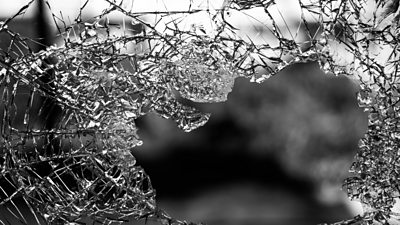
Accident Reporting and Investigation
This Safety Guideline describes how we manage, report and investigate accidents. -
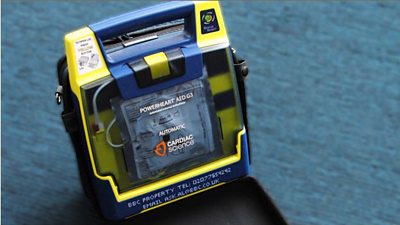
Automatic External Defibrillators
Information on using an Automatic External Defibrillator -
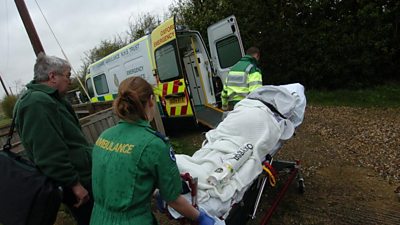
First Aid and Welfare on Location
A guide to provision of first aid and welfare facilities when working on location, away from base. -
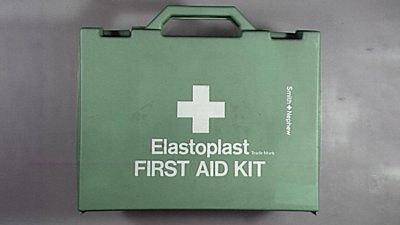
First Aid in ΒιΆΉΤΌΕΔ Premises
This page supplements the guidance to first aid on productions. It provides arrangements for contacting ambulances and the National Central Control Room (NCCR). -
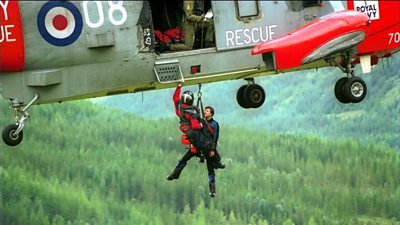
Medical Emergency Evacuation
Guidance in the event of staff becoming seriously ill or injured in countries and locations remote from emergency medical services. -
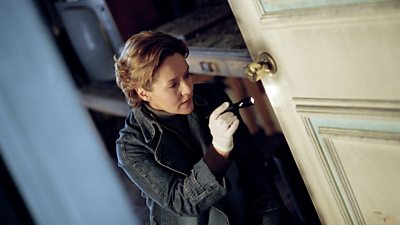 [Staff only] Security threats to the ΒιΆΉΤΌΕΔ can and do manifest as a serious incident resulting in fatality, injury, programme and service loss, damage to property, reputation issues, and financial loss.
[Staff only] Security threats to the ΒιΆΉΤΌΕΔ can and do manifest as a serious incident resulting in fatality, injury, programme and service loss, damage to property, reputation issues, and financial loss.
More from SSR
-
Your platform to record accidents, risk assessments, assurance monitoring and inspections
-
Safety Equipment Stores
Just one number to call: 020 3614 5155 -
ΒιΆΉΤΌΕΔ Safety Guidelines
An A-Z of ΒιΆΉΤΌΕΔ's Health and Safety Guidelines -
Safety Advice Line: 0370 411 0464 Email: safety@bbc.co.uk
- A-Z of ΒιΆΉΤΌΕΔ Safety Guidelines
- Accident Reporting and Investigation
- ΒιΆΉΤΌΕΔ Health & Safety Policy
- Contractors (incl. vetted lists)
- Contributors
- Fire Safety
- Freelancers
- Independent Production Companies
- Risk Assessment
- Safety Alerts
- Safety Responsibilities
- Safety Training
- Sets & Premises Safety Guide
Events guidance - key links:
- Exhibitions
- General Guidance
- Indoor Location Recce Checklist
- Outdoor Location Recce Checklist
- Major Incidents & Emergency Planning
- Marketing and Promotional
- Noise Exposure
- Planning and Management
- Responsibilities
- Responsibilities Form
- Laser Lighting Effects
- Strobe Lighting
- Temporary Stages and Rostra
Health topics - key links:
- (ΒιΆΉΤΌΕΔ network only)
- Contributors Fitness to Participate
- Display Screen Equipment (DSE)
- (ΒιΆΉΤΌΕΔ network only)
- First Aid and Welfare on Location
- International Travel - Risks & Health
- Manual Handling
- Mental Health: ΒιΆΉΤΌΕΔpage
- (ΒιΆΉΤΌΕΔ network only)
- Personal Health and Wellbeing
- Pregnancy
- Psychological Trauma Support & Trauma Risk Management (TRiM)
- Tiredness and Fatigue
- Travel Health Contacts
ΒιΆΉΤΌΕΔ High Risk - key links:
- CBRN and Industrial Spills
- Covert Filming
- Crisis Management and Security Support
- Demonstrations, Protests and Crowds
- Disaster Coverage
- Door Stepping
- (ΒιΆΉΤΌΕΔ network only)
- (ΒιΆΉΤΌΕΔ network only)
- Public Order
- Safety Equipment Stores
ΒιΆΉΤΌΕΔ Journalism - key links:
ΒιΆΉΤΌΕΔ Productions - key links:
- Aerial Filming and Airfields
- Animals: Displaying and handling for performance
- Boats: Working on
- Children and Young People
- Driving
- Electrical Equipment and Systems
- First Aid and Welfare on Location
- Food Safety (Cooking and Catering)
- Remote Location Working
- Roads and Streets: Working by
- Security of Productions on Location
- Stunts
- Tiredness and Fatigue
- Unmanned Aerial Systems (UAS aka Drones)
- Vehicles: Recording in, from and around
- Working at Height: Mobile Elevating Work Platforms
- Working at Height: Tower Scaffolds
ΒιΆΉΤΌΕΔ Radio - key links:
- (ΒιΆΉΤΌΕΔ Network only)
ΒιΆΉΤΌΕΔ Security - key links:
ΒιΆΉΤΌΕΔ Sport - key links:
About this site
This site describes what the ΒιΆΉΤΌΕΔ does in relation to managing its health, safety and security risks and is intended for those who work directly for the ΒιΆΉΤΌΕΔ.
It is not intended to provide instruction or guidance on how third parties should manage their risks. The ΒιΆΉΤΌΕΔ cannot be held liable for how this information is interpreted or used by third parties, nor provide any assurance that adopting it would provide any measure of legal compliance. More information
Some links on this site are only accessible when connected to the ΒιΆΉΤΌΕΔ network
